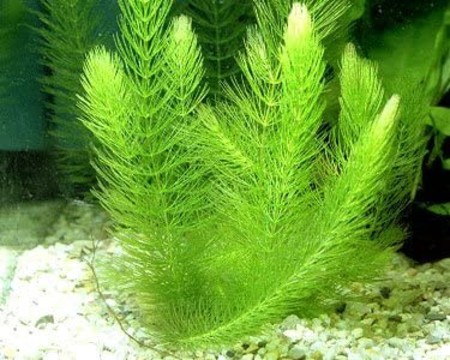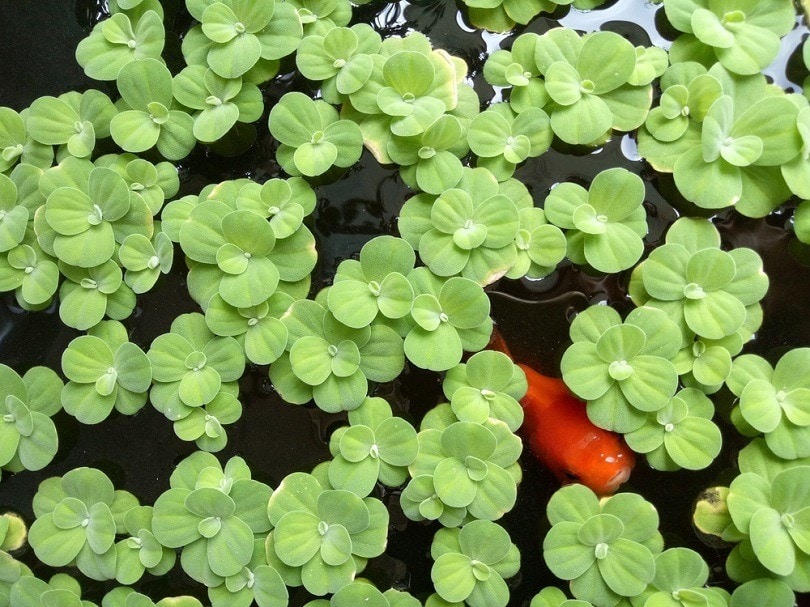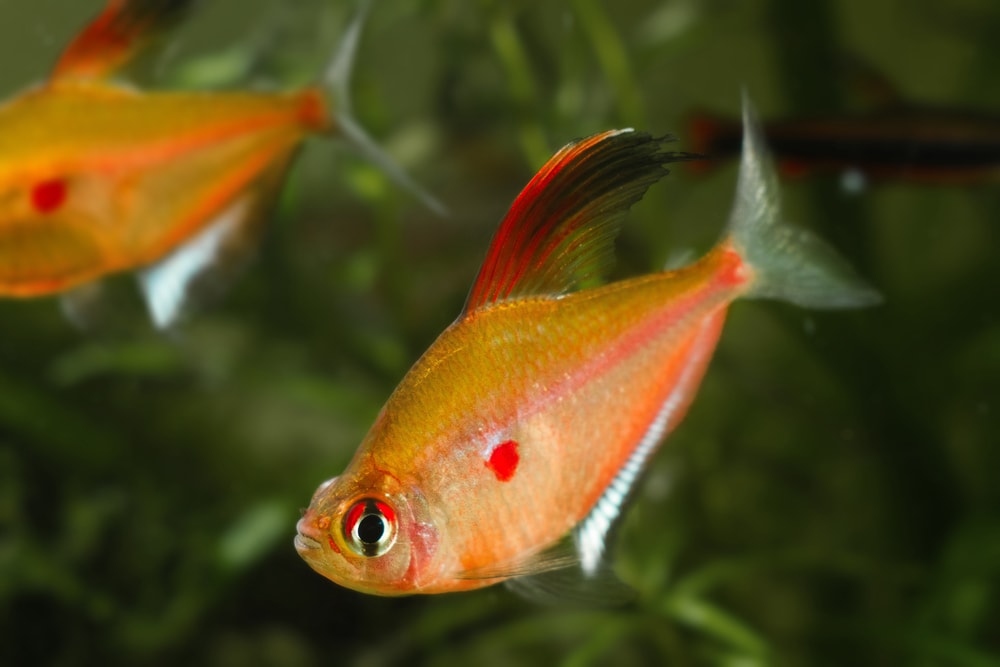5 Best Aquarium Plants For Sand Substrate in 2024: Reviews & Top Picks

Updated on

Substrate is one of those things which every aquarium needs to have. Sure, some people say that an aquarium without any kind of substrate is fine, and while fish might be able to survive, a bare tank bottom just looks and feels weird.
So, when it comes down to it, you can go with either gravel or sand and substrate, with many people agreeing that gravel is probably the far easier option to work with.
However, sand as aquarium substrate is indeed a viable choice, but you may have a hard time finding aquarium plants that thrive in sand. Today, we want to help you find the best aquarium plants for sand substrate. In this article, we have narrowed it down to five picks.

A Quick Look at Our Favorites in 2024
| Rating | Image | Product | Details | |
|---|---|---|---|---|
| Best Overall |
 |
Amazon Sword |
|
Check Price |
 |
Hornwort |
|
Check Price | |
 |
Java Fern |
|
Check Price | |
 |
Anubias |
|
Check Price | |
 |
Java Moss |
|
Check Price |
The 5 Best Aquatic Plants For Sand Substrate
Here are what we consider to be five of the best plants to go with, which will grow just fine in sand, or even just attached to some driftwood on top of the sand.
1. Amazon sword

| Care Level: | Easy |
| Light: | Low |
| Substrate: | Sand or gravel |
- Goldfish Proof Score: 90%
- Water Purifying Score: 60%
- Good beginner plant
- Tolerant of many water conditions
- Hardy
- Substrate depth is not important
One of the best plants to go with for sand substrate is the Amazon sword plant. Now, what is interesting here is that the type of substrate used is not as important as the thickness of it.
You can plant the Amazon sword in either sand or gravel, and it will do just fine, but what is important is that the sand or gravel be at least 2.5 inches thick, so the roots of the Amazon sword can really take hold and grow into a large and supportive root system.
With large green leaves that can grow up to 16 inches tall at a moderate pace, it makes for a good plant for any tank that requires a lot of hiding spots. The large leaves do help to create some privacy. It can get fairly large if not properly maintained, so you do want to trim it on occasion.
If you have a larger tank, you may not need to trim it at all. The Amazon sword is very easy to care for, as it does fine in both low and moderate lighting conditions. It needs the water temperature to be between 60 and 84 degrees Fahrenheit, with a pH level between 6.5 and 7.5 and a water hardness level between 8 and 15 dGH.
2. Hornwort

| Care Level: | Easy |
| Light: | Low to medium |
| Substrate: | Sand or floating |
- Goldfish Proof Score: 100%
- Water Purifying Score: 70%
- Easy to care for
- Substrate type does not matter
- Hardy
- Tolerant to different temperatures and pH levels
When it comes to the best plants for sand, Hornwort is definitely at the top of the list. Hornwort is one of those aquarium plants that can float on the water’s surface, it can be planted in sand or gravel, and it can be tied to rocks or driftwood too.
It’s versatility in terms of planting and rooting is one of the reasons why people love it so much. If you plan to anchor it down in the sand, make sure that you have at least 2 or 3 inches of sand, so it can form a proper root system that will support the hornwort.
Keep in mind that hornwort grows extremely fast, up to 5 inches per week, and if left unchecked, the offshoots can grow up to 10 feet long, and they will grow in both height and width; or in other words, they will grow out and up toward the light.
So, this means that hornwort is ideal for larger tanks, and even in larger tanks you will need to trim it regularly in order to keep it under control.
With that being said, it is very nice looking, with needle-like leaves, and it does create some decent hiding spots for fish as well. In terms of care, hornwort is quite easy to look after.
It requires moderate lighting, water temperature between 59 and 86 degrees Fahrenheit, a pH level between 6.0 and 7.5, and a water hardness level between 5 and 15 dGH.
3. Java fern

| Care Level: | Easy |
| Light: | Medium |
| Substrate: | Sand or fine gravel |
- Goldfish Proof Score: 90%
- Water Purifying Score: 80%
- Minimal care required
- Inexpensive
- Hardy and tolerant to conditions
- Great for water purity
Java fern is yet another plant that is ideal for sand. Alright, so what you need to know here is that the java fern does not like to be buried one bit. It features rhizomes instead of normal roots, and these do not do well if they are buried, whether in sand or gravel.
You might be wondering why this plant is on the list. Well, it is because the java fern prefers to be tied down to rocks or driftwood. Well, every good aquarium that has sand as substrate is going to have some driftwood and/or rocks in it. Therefore, simply tie the java fern to some rocks or driftwood, right on the sand substrate, and it will do just fine.
Many people do really like java ferns due to their relative ease of care. One thing to keep in mind is that if you want this plant to grow fast and to be healthy, adding some extra oxygen into the water will help.
The java fern can grow to nearly 14 inches in height and it features fairly narrow and long leaves that come to a point, and these make for great hiding spots for fish. When it comes to the lighting needs of the java fern, low to moderate lighting will do just fine.
The water temperature for this plant should be between 68 and 82 degrees Fahrenheit, with a pH level between 6 and 7.5 and a water hardness level between 3 and 8 dGH.
4. Anubias

| Care Level: | Easy |
| Light: | Medium |
| Substrate: | Sand or fine gravel |
- Goldfish Proof Score: 90%
- Water Purifying Score: 70%
- Great for beginners
- Slow and steady growth
- Hardy
- Great for water purity
Anubias is yet another plant that is more than ideal for really any kind of tank. Anubias feature long and skinny roots that do a great job at attaching themselves to more or less anything. Anubias can be attached to some roughly textured rocks or driftwood, and the roots will grab hold no problem.
Now, most people do prefer planting Anubias in gravel, as gravel is better for the roots, but it will do fine in sand as well. Really any kind of surface or substrate thick enough to allow the Anubias to form a good root system will do fine.
Anubias have fairly round and broad leaves that come to a point at the front, and the plant itself can grow to around 7.5 inches in height, making it an ideal midground, foreground, and background plant, whether your aquarium is large or small.
It has a fairly slow growth rate, so you don’t need to worry much about trimming, but once it gets bigger, it does create some good resting and hiding spots for fish. When it comes to care, Anubias require the water temperature to be between 72 and 82 degrees Fahrenheit, with a pH level between 6 and 7.5 and a water hardness level between 3 and 8 dGH.
This plant does fine in both low and moderately strong light, and it really does not require the addition of anything extra into the water.
5. Java Moss

| Care Level: | Easy |
| Light: | Medium |
| Substrate: | Sand, gravel, or floating |
- Goldfish Proof Score: 90%
- Water Purifying Score: 50%
- Little to no care requirements
- Inexpensive
- Hardy and tolerant to a wide range of water conditions
- Slow and steady growing
Alright, so java moss is another one of these plants that is not the best when buried. In other words, it really does not prefer being buried in substrate, whether it be sand or gravel. However, as mentioned before, if you are using sand as substrate, you probably have a bunch of rocks and driftwood in your aquarium, which is where java moss shines.
Java moss has long and skinny rhizomes, which are its roots, and they do a wonderful job at attaching themselves to anything and everything they can get a hold of. Java moss is best planted by simply tying it down to some rocks or driftwood, and letting the rhizomes anchor themselves down. It really does not get much easier than that.
Java moss has a moderate growth rate, and it will grow to a few inches in height from wherever it is anchored, so it’s not too hard to care for in that sense. It makes for a good bed for fish that like to rest on something soft, it makes for a good hiding spot for small fish and fish fry, and some fish love to nibble on this stuff as well.
When it comes to caring for java moss, that part is quite simple too, because it does not require the injection of CO2 or oxygen, and it will do just fine in pretty much any lighting conditions. In terms of temperature, between 59 and 86 degrees Fahrenheit will do fine, with a pH level between 5.0 and 8.0.

Buyer’s Guide: Choosing the Best Aquatic Plant For Sand Substrate
Remember To Use Root Tabs
One thing that you should probably do when planting any kind of aquarium plant in sand is to use root tabs. Roots tabs are little pellets that contain all of the nutrients which most plants need in order to thrive, especially when it comes to developing a strong and healthy root system.
Yes, it can be hard for some plants to get their roots anchored and growing in sand, but to speed along the process, and to let those roots flourish, adding some root tabs into the water before and after planting your plants in the sandy substrate will definitely help.
Do Aquarium Plants Grow Better In Sand Or Gravel?
Okay, so there are some aquarium plants that may grow better in sand than in gravel, but for the most part, gravel does allow plants to grow better.
The main reason for this is due to the root system. Plant roots will have a hard time finding good anchor points in the sand, plus sand does not allow for the best transfer or oxygen and nutrients either, because it is quite dense.
On the other hand, gravel is more coarse, it allows more nutrients and oxygen to pass through, and it will provide the roots of your aquarium plants with more anchor points too.


Conclusion
At the end of the day, while generally speaking gravel is the better substrate to go with, both due to plant growth and ease of cleaning, may aquarium plants will do just fine in sandy substrate (Our favorite being Amazon Sword plants, you can buy them at Amazon here), especially if you happen to use root tabs, and yes, if you get the right plants.
See Also:
- How Much Sand Do I Need For My Aquarium? Facts & FAQs
- 10 Best Artificial Aquarium Plants & Reviews & Top Picks
Featured Image Credit: Joan Carles Juarez, Shutterstock













